Posts Tagged ‘chocolate’
Creating desserts with dark and white chocolate is great, but sometimes you may get bored with the restricted choice of colours. Since my recent post about the simple chocolate painting technique I’ve felt the urge to find methods to dye chocolate so I could paint more elaborate pictures.
The difficulty is that chocolate doesn’t mix well with regular liquid food colouring, so I decided to go with powder alternatives instead, some of them homemade. I refrained from using artificial food colouring. It’s not that I condemn it because of fear of health risks – It’s rather because I like being challenged. The fact that I, erm, don’t have access to artificial colouring powder might count as a reason as well. Colouring with natural ingredients is more fun anyway because it enhances appearance as well as flavour!
I’ve had a lot of fun experimenting and came up with 15 ways to colour and flavour white chocolate naturally. But I’m sure there are a lot more ways to do it! I would be glad if you shared your own ideas in the comment section.
In all the examples here, I melted regular white chocolate in block form, mixed it with the corresponding powder and let it harden in a silicone mold. (If you like it, you can buy it here). Per piece, I mixed 8 grams of chocolate with 1-4 measured pinches of powder (1 pinch = 0.5ml). And I sieved the powder whenever I could.
How to make White Chocolate with Coconut
Simply mix in instant coconut milk powder. I used 3 pinches for one piece.
- Colour: Maybe it’s just my imagination, but I think the coconut chocolate is whiter than the original white chocolate.
- Flavour: Didn’t really taste like coconut! I blame it on the poor quality of the instant powder.
How to make Beige Chocolate with Kinako
Kinako (toasted soybean flour) is available at Japanese grocery stores, but you could also prepare it yourself by following this recipe here. I added 3 pinches.
- Colour: Very nice and even colour that can be used if you’re aiming for sand or skin tones.
- Flavour: Kinako on its own is a disgrace but mixed with sweet stuff it’s delicious (try kinako ice cream!). The taste will remind you of peanut butter.
How to make Brown Chocolate with Cinnamon
2 pinches of ground cinnamon, that’s all there is to it.
- Colour: Well, it’s brown. Not too exciting…
- Flavour: Fabulicious! Looks like regular chocolate but tastes different.
How to make Yellow Chocolate with Orange Zest
You need an organic, thoroughly washed orange and zest it. Heat the zest in the microwave for about 5 minutes until it’s dry and grind it in a mortar or with a machine. I used 2 pinches.
- Colour: Nice orange-yellow! Depending on how finely you grind it, texture is more or less visible.
- Flavour: Quite a pronounced orange aroma with a bitter note that fits perfectly with white chocolate.
How to make Yellow Chocolate with Turmeric
Turmeric powder is easily available at Asian markets. I added only one pinch.
- Colour: What an intense and consistent colour! It has a hint of ochre in it.
- Flavour: Not too good. It tasted a little soapy to be honest. Next time, I’ll definitely add less powder.
How to make Orange Chocolate with Chili
I ground Korean chili for this one and added 2 pinches. Korean chili is superb, seriously.
- Colour: Beautiful grainy orange.
- Flavour: Not bad at all, but very spicy! Probably best in combination with dark chocolate.
How to make Pink Chocolate with Red Berries
For this one, you need to grind freeze-dried red berries. Regular dried berries won’t do because they’re too chewy. It may be difficult to find this, so here’s a trick: buy Kellogg’s Special K Red Berries cereal and pick out the fruit pieces :-D. I used a freeze-dried berry selection with strawberry, red currant and raspberry. Pinches added: 3.
- Colour: Gorgeous pink with little grains.
- Flavour: Fantastic! An intense fruity aroma with a bit of a sour note. This flavour is certainly a crowd-pleaser. Be sure to make a big batch!
How to make Red(ish) Chocolate with Red Beet & Kinako
I used a little trick for this one: Mix a bit of kinako powder with and equal amount of red beet juice and heat it in the microwave for a few minutes until it’s dry. Grind it and you have sort of an instant red beet powder! I used 3 pinches.
- Colour: It’s not a profound red – it’s more like pinkish red wine colour I guess.
- Flavour: Much to my surprise it didn’t taste like beets at all. It tasted like a mixture of fruits and nuts.
How to make Purple (?) Chocolate with Red Berries & Cornflower
Grind freeze-dried red berries and dried cornflower (see blue and pink chocolate for more information) together. I used 3 pinches.
- Colour: Well, it was supposed to look like purple but actually, the colour is rather unidentifiable…
- Flavour: The berry flavour was dominant.
How to make Blue Chocolate with Cornflower
Cornflower (not to be confused with cornflour) is a flower with an intense blue colour. It’s also known under the Latin name Centaurea Cyanus. Getting dried cornflower petals is probably a bit difficult. Try your luck in stores that specialise on condiments or tea. I ground the cornflower with a few grains of salt and used 2 pinches.
- Colour: A pale, greyish blue with texture.
- Flavour: Nice, but not a very distinct aroma. It reminded me a bit of lavender.
How to make Green Chocolate with Seaweed
Don’t say I’m crazy! Commercially sold seaweed chocolate does exist after all. I used Aonori, which is a type of Japanese seaweed (often used as an okonomiyaki topping), but other types of thin dried seaweed layers should work fine, too. Roast the seaweed before grinding. I used 2 pinches.
- Colour: Pale olive green with little grains.
- Flavour: It’s chocolate with an intense seaweed flavour! Without a doubt, it does take getting used to. You either hate it or love it.
How to make Green Chocolate with Green Tea Powder
Simply use matcha green tea powder. You should be able to get this in Japanese grocery stores. One pinch was enough.
- Colour: A very strong, dark green and even colour.
- Flavour: Green tea chocolate is rather bitter, but delicious. Don’t miss out on that one.
How to make Grey Chocolate with Black Sesame Dessert Powder
I used black sesame instant dessert powder that I bought at an Asian grocery store. I think you’re supposed to make hot sesame dessert soup with it (?). I added 4 pinches of it.
- Colour: Light grey colour with a few grains.
- Flavour: It’s okay, but not delicious. Doesn’t compare to the real thing at all.
How to make Grey Chocolate with Poppy Seed
Roast the poppy seeds and grind them. You won’t get powder from this but it will blend with the chocolate anyway. I used 2 pinches.
- Colour: A grainy grey with a hint of brown.
- Flavour: I didn’t really like it. It tasted a bit like rubber. What went wrong?
How to make Grey Chocolate with Black Sesame Seeds
Roast and grind, just like the poppy seeds. I used 3 pinches.
- Colour: Dark grey with black grains.
- Flavour: Yummy! Intense roasted black sesame flavour with a hint of bitterness. One of the most popular flavours of this selection.
Your head is spinning with more ideas? I’d love to hear them.
This isn’t your average hot chocolate on a spoon. It’s hot concrete chocolate on a mafia victim. Black sesame chocolate to be precise. The guy is made from chocolate, too. You’re supposed to melt the whole thing down in a cup of hot milk so you get to drink hot chocolate. There’s a wooden spoon behind the guy for stirring. This could be a nice gift for a mafia fan.
Pretty nice concept, eh? The idea originated from a Dutch/German chocolate company. They sell their Hotchocspoons in many varieties. Awesome. I’ve tried apple pie flavour, it was delicious.
The idea made its way into the foodie blogosphere where it was adapted by many. You can find neat versions of hot chocolate on a spoon/ stick for example here with marshmallows, here in heart shape, and here with sprinkles and more sprinkles. That’s what I like about the blogging network: a good basic idea becomes widely known and inspires people to share their own rendition with the public. It’s not a cycle of copying – it’s a never-ending flow of creativity and advancement.
Why did I make mafia style hot chocolate on a spoon? Well, I was thinking about making hot chocolate spoons with different colours. Grey chocolate made from black sesame was one of the things that came to my mind. And since a grey chocolate block looks like concrete… and you have to drown it in milk… it was kind of obvious that this has to be turned into the look of a mafia victim with cement shoes.
I wanted to take more pictures of the final product but at some point during the shooting the chocolate guy fell down and his head broke apart! Isn’t it ironic? It was death by decapitation although he was destined to lose his life through drowning in milk.
How to make Hot Chocolate on a Spoon – Mafia Style
Cooking Soundtrack: The Godfather Theme
- dark chocolate
- white chocolate
- freeze-dried red berries
- kinako powder (toasted soy bean flour)
- black sesame powder (such as instant powder for dessert)
- wooden spoon or stick
- ice cube tray or small muffin mold
- If you want to see a detailed explanation on how to make simple chocolate paintings, click here to see my previous post about it.
- Here’s the picture of my mafia victim, directly traced on parchment paper, ready to be painted.
- For the dark parts, I used chocolate with 99% cocoa content. Really dark shade. And really bitter taste. That suits the theme, doesn’t it?
- Ready to be moved to the refrigerator.
- For the rose, I powdered the freeze-dried berries and mixed them with white chocolate.
- I mixed kinako and white chocolate for the skin parts.
- After those parts have hardened up in the refrigerator as well, cover everything with white chocolate and refrigerate again.
- Mix black sesame powder with white chocolate for the “concrete” and pour it into the mold. Place chocolate victim and wooden spoon inside and stabilise with box or something alike.
- Drown the guy in a cup of hot milk and let him melt down. Black sesame and dark chocolate are a great combo, believe me.
Today’s post will introduce you to a simple chocolate painting technique that yields amazing results. Don’t worry, it doesn’t require special equipment or outstanding drawing skills. You can choose any motif you want, be it pictures of friends and family, handwriting, your kid’s favourite cartoon character, an elegant pattern, a company logo or the movie star you have a crush on – almost anything can be turned into an accurate chocolate picture with this easy method. You can use it as a neat cake decoration, or serve it on a plate together with dessert.
I was thrilled when I discovered this technique on Yurin’s Obentou Blog (*3兄妹ママのお弁当ブログ*). It’s a Japanese blog that centers around kyaraben. Go have a look at it! It doesn’t matter if you can’t understand Japanese, because looking at the pictures is satisfying enough.
Basically, I will be explaining Yurin’s method here, but since I’m not using the the same material and I’ve chosen a different kind of motif I adjusted the method plus I added some personal tips.
How to make a Chocolate Painting
You will need:
- a picture subject.
- dark and white chocolate. I used regular block chocolate, the dark one had 72% cocoa content. Note that Yurin is using so called sign choco. Apparently, that’s chocolate sold in Japan for decoration purposes. It has quick drying properties, comes in a pen-shaped tube and there are different colours available. But really, regular chocolate works fine too.
- optional: food colouring. I tried regular liquid food colouring once and it resulted in a rather bad chocolate texture. I guess it’s better if you work with liposoluble food colouring or powder alternatives. I mixed white chocolate with matcha green tea powder once and it turned out well. Please tell me if you know of any other methods to colour white chocolate naturally.
- a piece or cardboard or a tray
- parchment paper
- small plastic bags
- a bamboo skewer or a toothpick
- First, think about which motif you would like to use. It’s easiest to use stylized images. Here are a few suggestions for suitable art styles: cartoon/comic, line art, stencil art, print art, art nouveau, pop art, pictograms, silhouettes and so on. You can look for stylized images through a search engine by using the named keywords, or you could trace a picture from a book or magazine directly on the parchment paper. Or even draw your original artwork on the parchment paper. Or stylize a photograph by yourself with photoshop, like I did. I took an Audrey Hepburn picture (original source) and turned it into a 3-layer stencil art following this easy youtube tutorial.
As you can see, I mirrored the image. This step wasn’t really necessary in my case, but it is especially important if you have writing on your picture. I also did some corrections with the pencil tool, like eliminating the highlight in the hair.
- If you use a picture printout, tape it to the cardboard. Then cover with a piece of parchment paper and tape that onto the cardboard as well. If you drew directly on the parchment paper, make sure the surface with your pencil marks is facing the cardboard.
- It’s best to start painting with the darkest shade, especially when you have an image with outlines. Chop the dark chocolate finely and fill it into the corner of a small plastic bag. Fill a bowl with hot tap water, dip in the plastic bag corner and melt the chocolate, kneading it from time to time to make sure there aren’t any clumps. The temperature of the water shouldn’t exceed 50°C.
- When the chocolate is melted, cut away the tip of the bag corner and you can start drawing the dark layer. On large surfaces, you can apply the chocolate directly from the bag. For fine details, use the bamboo skewer. You can also pipe a bit of chocolate on a plate, dip the skewer in it and draw. The bag keeps the chocolate from cooling too quickly so only pipe out a little a time. When your done, let the painting cool down in the refrigerator.
- Now it’s time to apply the midtones. I mixed Moneygram fees dark and white chocolate together to get the colour I wanted. When drawing, it’s okay to overlap the dark chocolate areas since it won’t shine through later. Refrigerate again when you’re done.
- At last, apply the white chocolate background. This is the easiest drawing step because you can just splash and disperse it. Make this layer thick enough to give the chocolate stability. Be careful not to use overheated chocolate or your previous work will melt away! Shake the picture a bit so prevent air bubbles. Refrigerate for one last time.
- Carefully turn the chocolate over when it’s firm. Don’t touch it with your bare hands – use gloves or a napkin. You’re done!
A few last words: The chocolate has a rather soft texture when at room temperature and melts as soon as you touch it. That can be a desirable state if you’re using the chocolate picture as a cake frosting for example. If you’re aiming for a chocolate picture with a very shiny surface that snaps, you have to put in some extra effort when heating the chocolate. Research chocolate tempering if you’re interested.
Have fun with this cool technique! And please let me know if you have additional tips! :-D
Serve someone this cute pancake bear breakfast for a happy start in the day! It’s hardly more time-consuming than a regular pancake. All you have to do is prepare your batter according to your favourite pancake recipe. When pouring the batter into the frying pan, start with a circle for the head and then immediately pour 2 small circles overlapping the first circle a bit for the ears. Decorate it with chocolate syrup and a banana slice after you have cooked both sides. If you don’t have chocolate syrup, simply mix cocoa powder with a little milk or water and fill it into a piping bag.
I got the bear-shaped pancake idea from a Japanese drama series called Otomen. It’s about a high school boy that seems very manly on the outside but he has girly hobbies like cooking and sewing that he tries to keep secret. The series itself didn’t impress me much but I was at least fascinated by the appearance of the pancake bear in episode 2. In the scene, the main character Asuka makes the pancake to cheer up a lonely half-orphan at an all-day care centre. The boy gets overly happy of course.
Using a banana slice as a snout is an idea I got from this phenomenal picture that I found here in the sweets section of キャラ弁倶楽部 (Kyaraben Club). Ah, so cute.
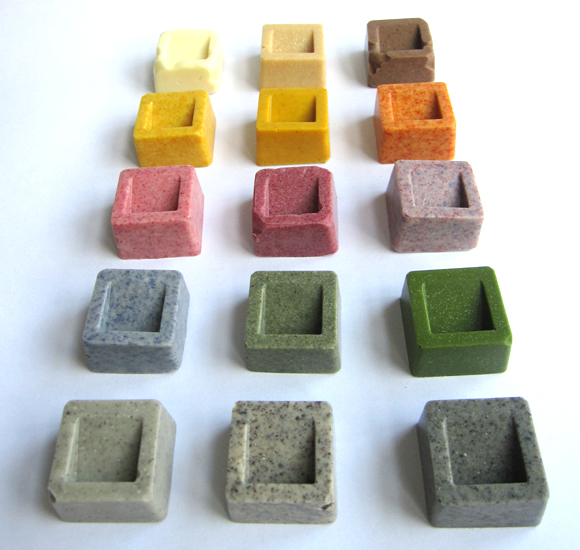
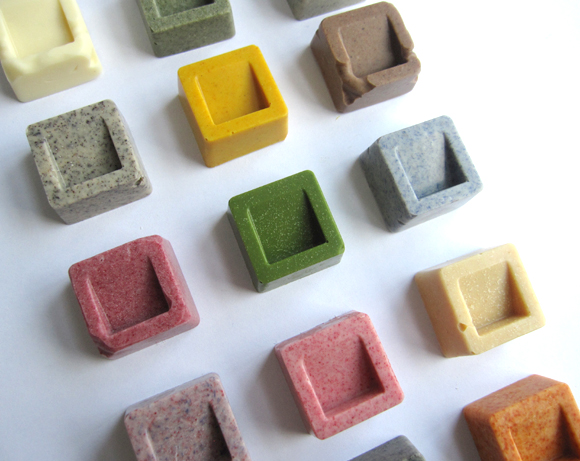
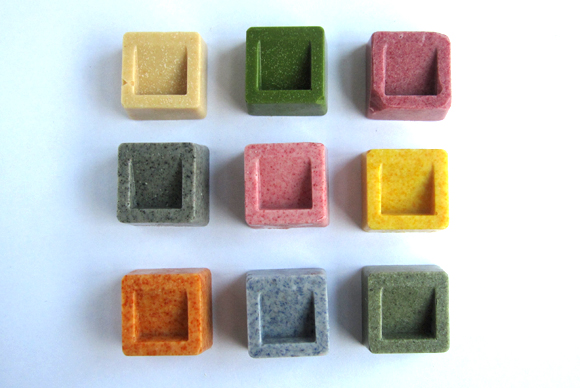
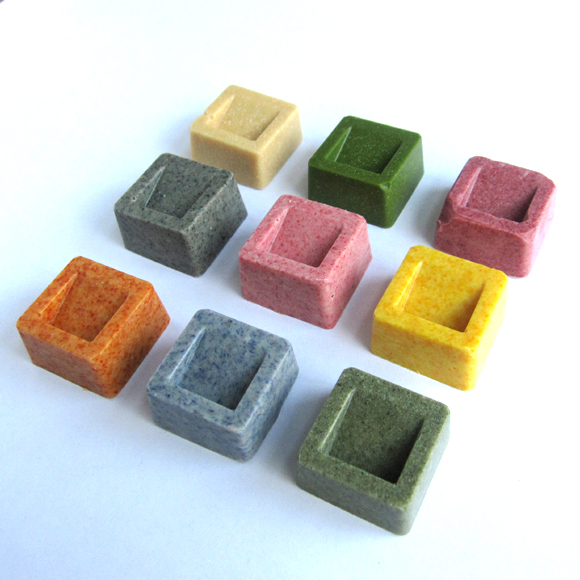
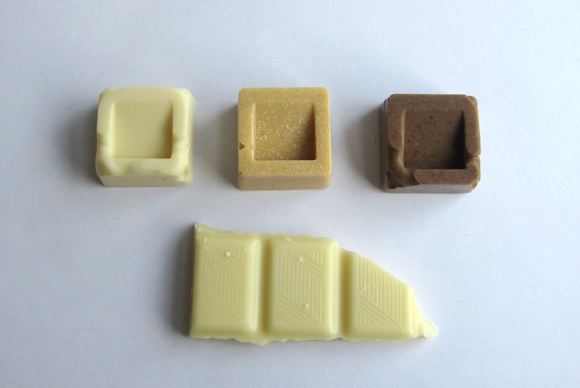
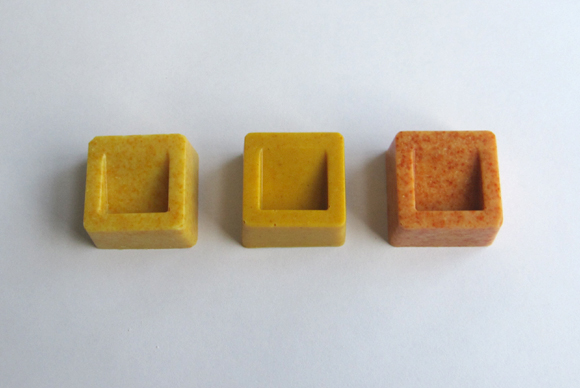

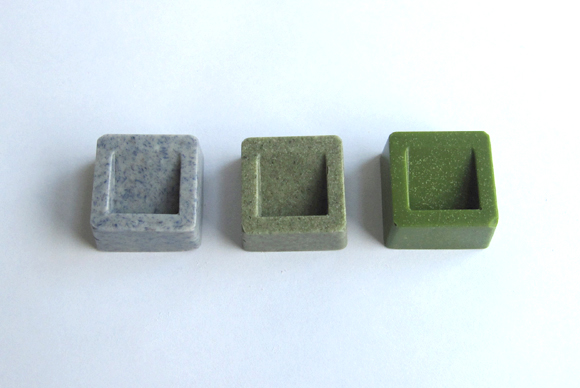
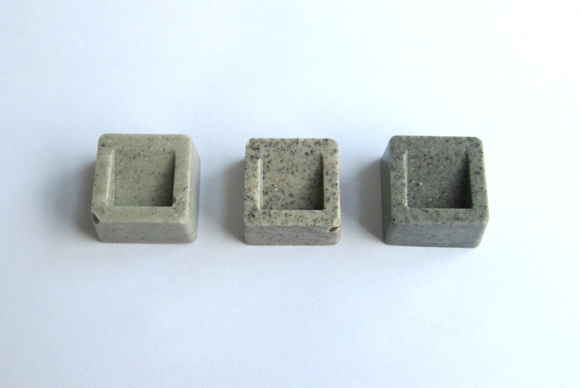
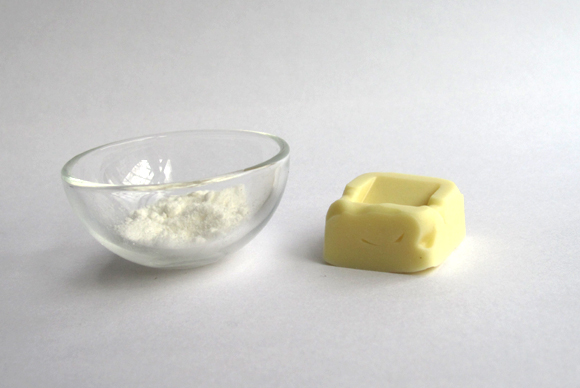
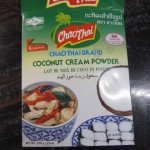
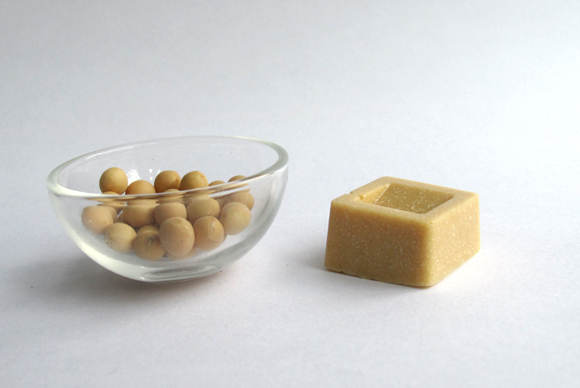
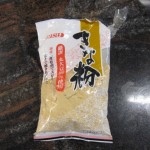
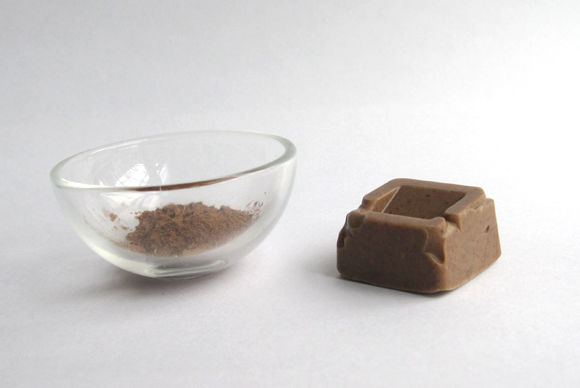
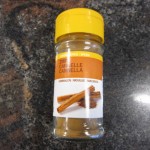
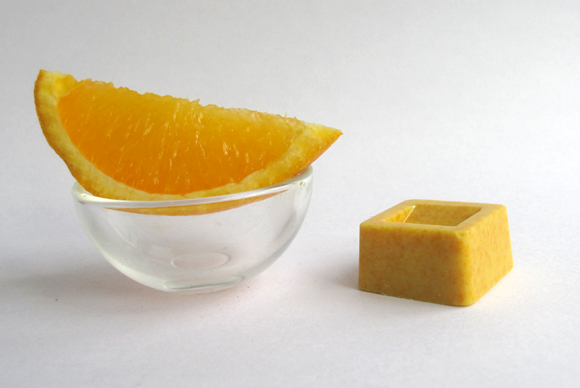

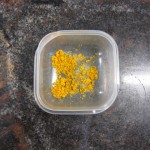
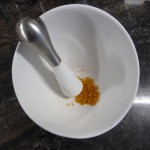

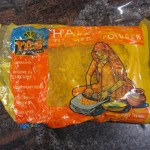
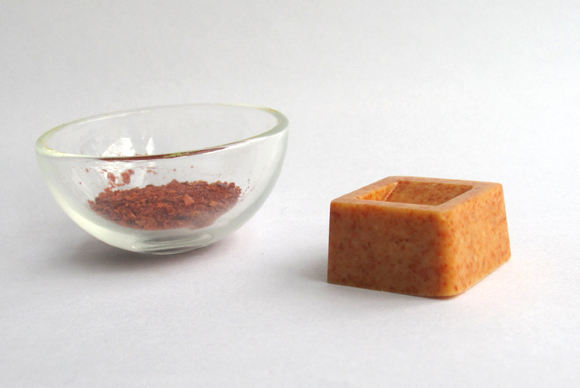
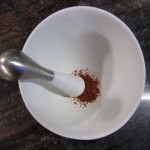
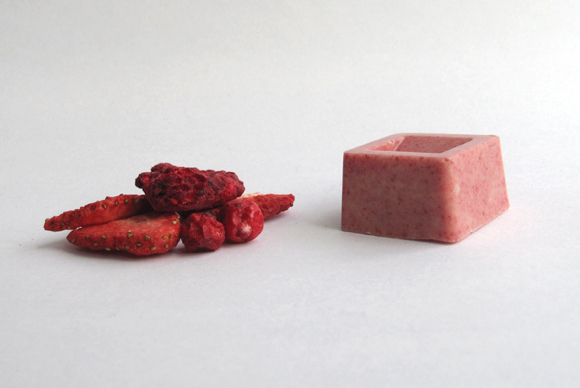

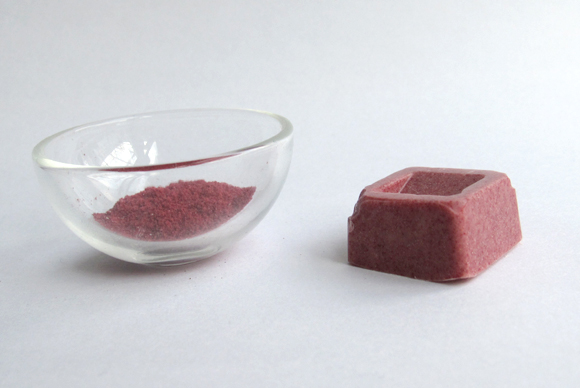
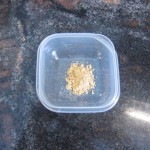
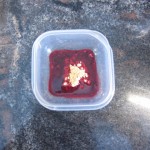
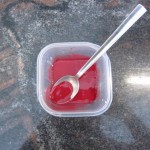
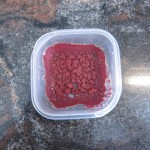

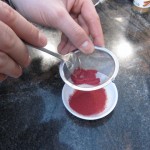

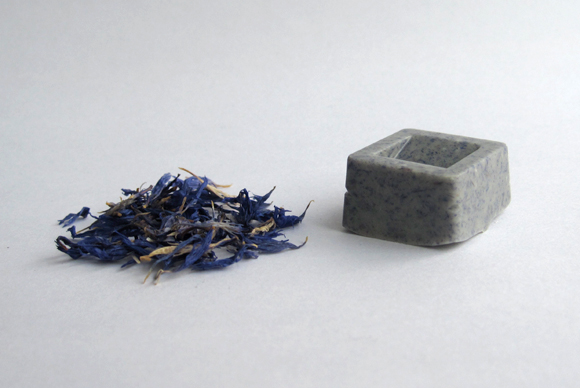
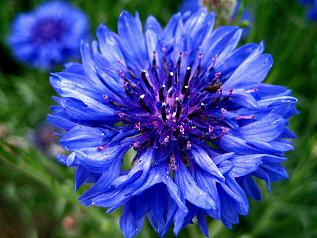
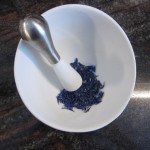
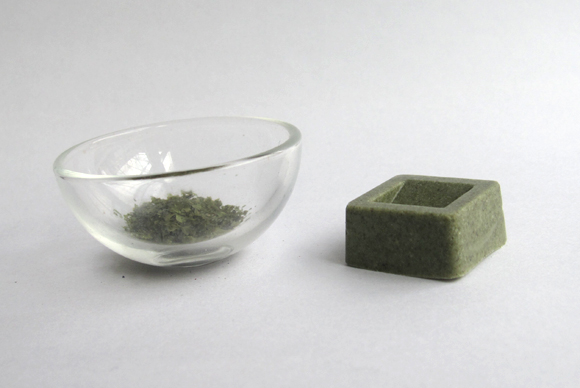
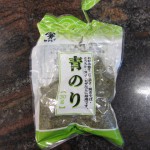
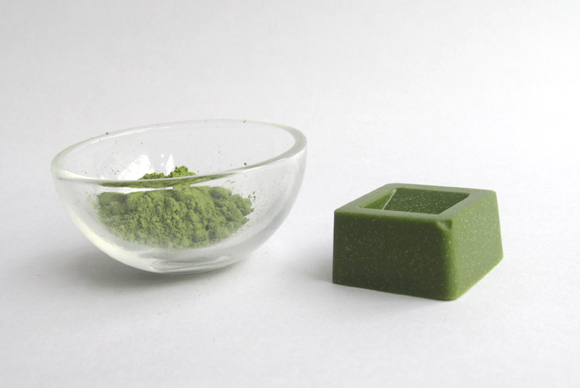
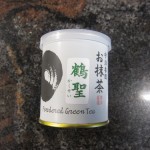
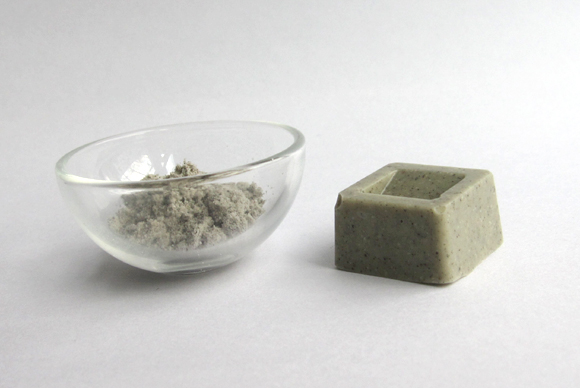
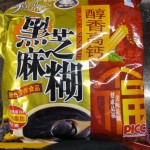
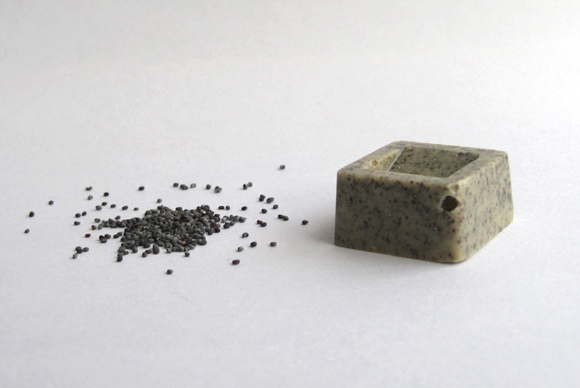
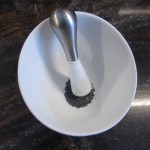
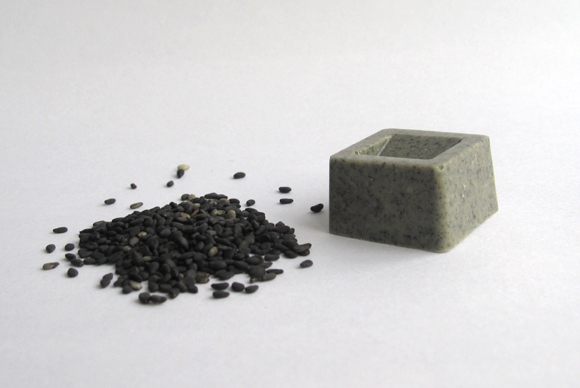
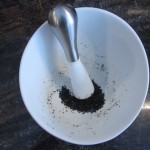
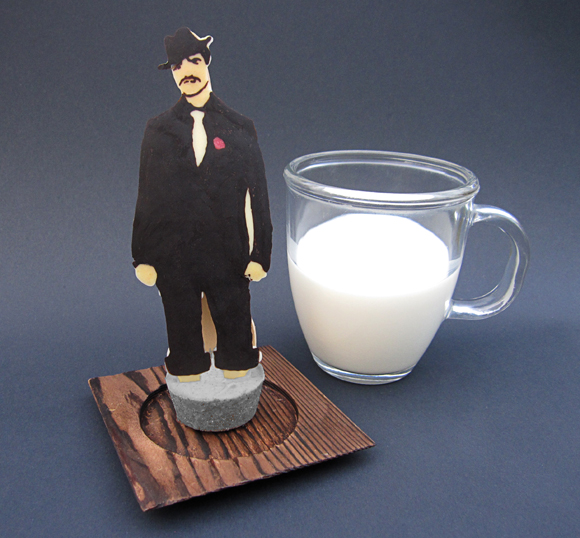
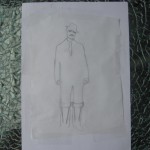
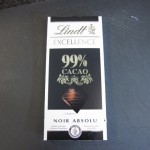

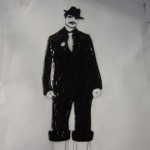
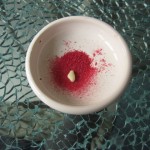
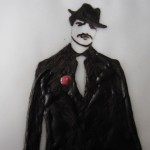
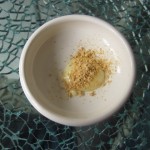

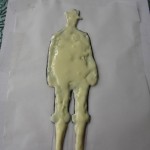
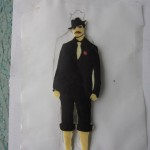
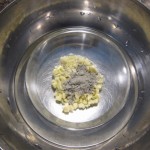

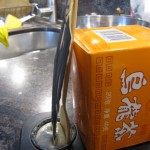
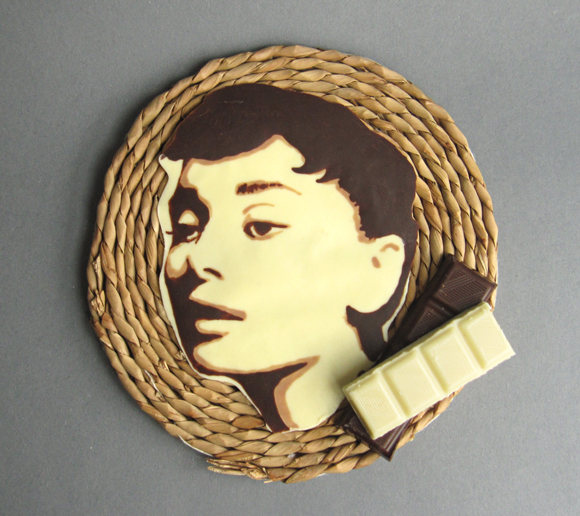
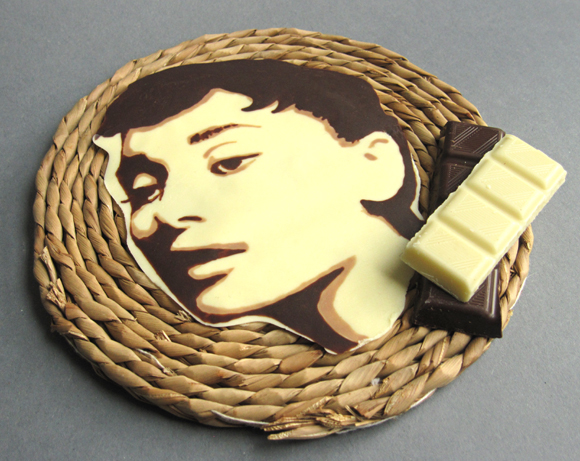



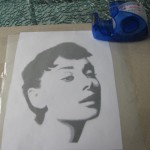


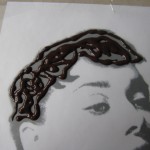
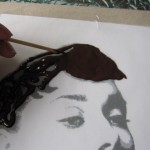
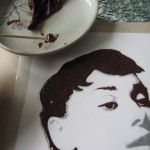
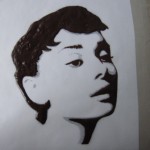
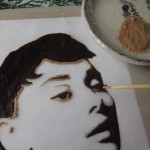
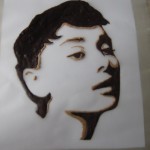
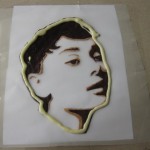
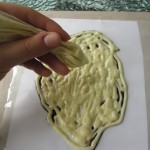
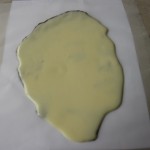
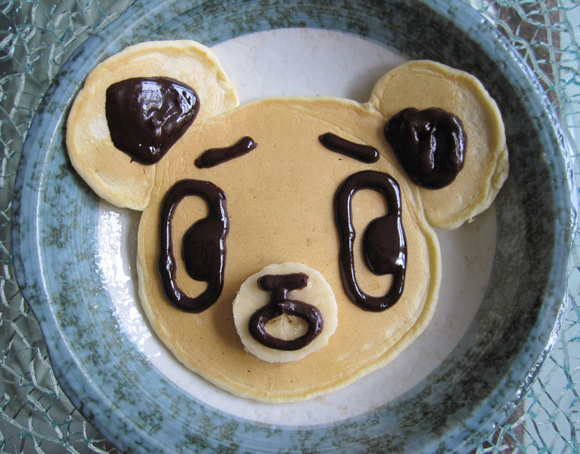
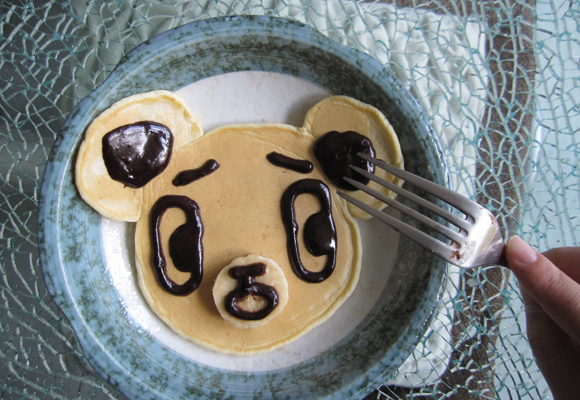
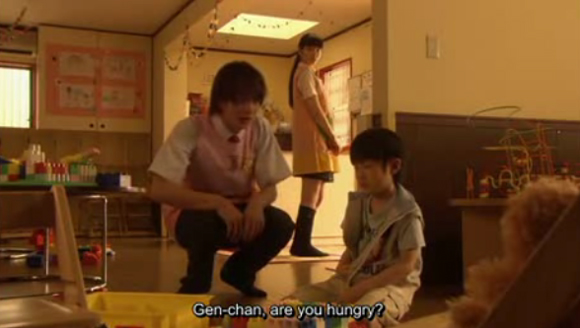


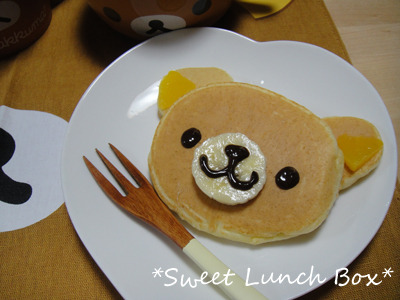
 Get updates via twitter
Get updates via twitter
